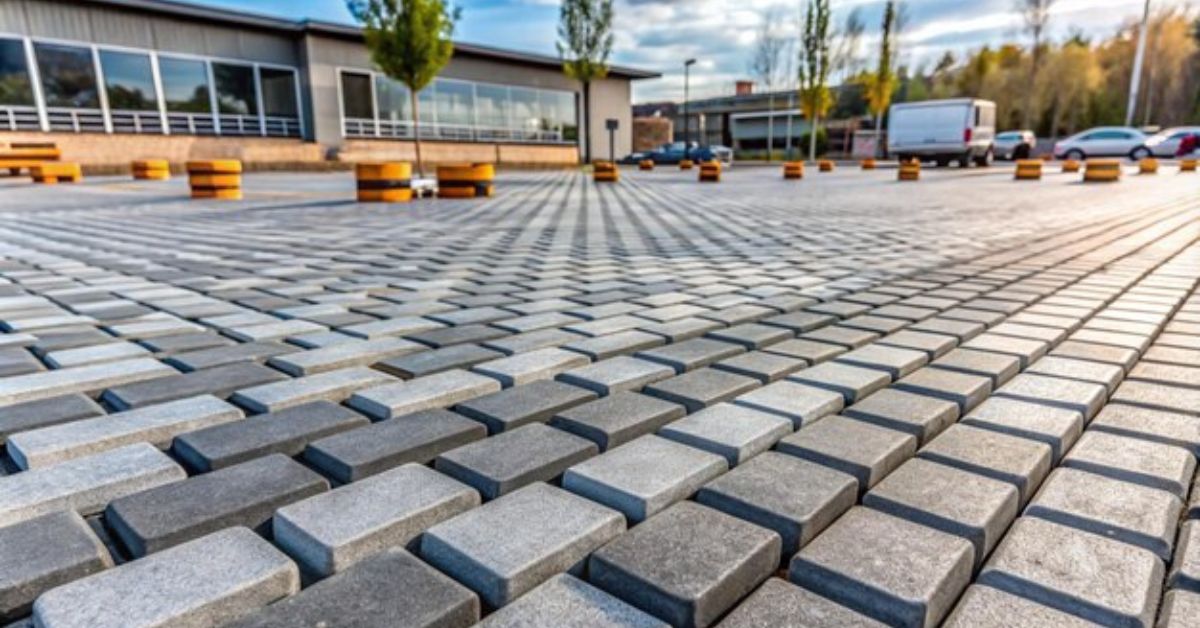A soffit is an integral component of a building’s structure, often overlooked despite its significant role in both aesthetics and functionality. Found in various areas of a home, soffits contribute to the overall design and efficiency of a building. This comprehensive guide delves into what a soffit is, its types, functions, and the reasons why it is important in home construction and maintenance.
What is a Soffit?
Definition and Basic Concept
A soffit refers to the horizontal or sloped surface that bridges the gap between the top of a wall and the underside of an overhanging roof or eave. It is typically visible from below and can be found on both the exterior and interior of buildings. The primary purpose of a soffit is to cover and protect the exposed rafters and eaves, providing a finished appearance and aiding in ventilation.
Components and Construction
Soffits are constructed from various materials, including wood, aluminum, vinyl, and fiber cement. The choice of material depends on factors such as durability, aesthetics, and maintenance requirements. The soffit material is installed in a way that it fits neatly between the fascia (the board at the end of the rafters) and the exterior wall of the home.
Types of Soffits
Ventilated Soffits
Ventilated soffits are designed with built-in vents that allow for the circulation of air. This type of soffit is crucial for maintaining proper attic ventilation, which helps in regulating temperature and reducing moisture buildup. Proper ventilation prevents issues such as mold growth and ice dams, which can cause significant damage to roofing structures.
Non-Ventilated Soffits
Non-ventilated soffits do not include ventilation features and are used primarily for aesthetic purposes or in areas where ventilation is not required. These soffits offer a clean, smooth appearance and can be made from a variety of materials. While they do not contribute to ventilation, they still serve the essential role of concealing structural elements and protecting them from the elements.
Interior Soffits
Interior soffits are found inside a home, often used to cover structural components such as ductwork, plumbing, or electrical wiring. These soffits can be designed to blend seamlessly with the interior décor, providing a polished look while concealing functional elements. Interior soffits are often found in kitchens, bathrooms, and other areas where aesthetics and functionality intersect.
Exterior Soffits
Exterior soffits are installed on the outside of a building, typically under the eaves of the roof. These soffits are exposed to the elements and are designed to withstand weather conditions while providing protection and ventilation. Exterior soffits are available in a variety of materials and finishes to complement the overall design of the home.
Functions and Importance of Soffits
Ventilation
One of the primary functions of soffits is to facilitate ventilation in the attic space. Proper ventilation helps regulate temperature and humidity levels, reducing the risk of moisture buildup and heat damage. By allowing air to flow through the soffit vents, homeowners can prevent common issues such as condensation, mold growth, and ice dam formation.
Aesthetic Appeal
Soffits contribute to the visual appeal of a building by providing a finished, cohesive look. They cover exposed structural elements and create a seamless transition between the roof and walls. The choice of soffit material and design can enhance the overall aesthetic of a home, complementing architectural styles and adding curb appeal.
Protection
Soffits play a crucial role in protecting the building’s structural components. By covering the exposed rafters and eaves, soffits shield these elements from weather damage, such as rain, snow, and sun exposure. This protection helps extend the lifespan of the roof and reduces the need for frequent repairs.
Concealment
In addition to their protective and aesthetic functions, soffits also serve as a means of concealing unsightly elements. For interior soffits, this might include ductwork, plumbing, or wiring. On the exterior, soffits cover the rafters and other structural components, creating a clean and polished appearance.
Materials Used in Soffits
Wood
Wood soffits offer a traditional and natural look, adding warmth and character to a building. They can be stained or painted to match the home’s exterior. However, wood soffits require regular maintenance to prevent issues such as rot and insect damage. Proper sealing and periodic inspections are necessary to ensure their longevity.
Aluminum
Aluminum soffits are durable and low-maintenance, making them a popular choice for many homeowners. They are resistant to rust, rot, and insects, and are available in a range of colors and finishes. Aluminum soffits are also lightweight and easy to install, contributing to their widespread use.
Vinyl
Vinyl soffits are another low-maintenance option that is resistant to weather and insects. They come in various styles and colors and do not require painting. Vinyl soffits are easy to clean and can be a cost-effective choice for homeowners seeking a balance between durability and affordability.
Fiber Cement
Fiber cement soffits offer the durability of cement combined with the aesthetic appeal of wood. They are resistant to fire, rot, and pests, and can be painted to match the home’s exterior. Fiber cement soffits provide a robust and long-lasting solution, though they may be more expensive than other materials.
Installation and Maintenance
Installation Process
Installing soffits involves measuring and cutting the material to fit between the fascia and the wall. The soffit panels are then secured using screws or nails, ensuring they are properly aligned and sealed. For ventilated soffits, careful attention is given to the placement of vents to ensure adequate airflow.
Maintenance Tips
Maintaining soffits involves regular inspections to check for damage, wear, and accumulation of debris. Cleaning soffits periodically helps prevent buildup of dirt and grime, and addressing any issues promptly can prevent more significant problems. For wood soffits, periodic painting and sealing are necessary to protect against the elements.
Common Issues and Solutions
Water Damage
Water damage can occur if soffits are not properly sealed or if gutters are clogged. Regular maintenance of gutters and checking for leaks can prevent water damage. If water damage is detected, it’s important to address the issue promptly to avoid further deterioration.
Pest Infestations
Soffits can sometimes attract pests, such as insects or rodents. Ensuring that soffits are properly sealed and inspecting for signs of infestations can help prevent pest-related issues. If pests are detected, professional pest control services may be needed.
Aesthetic Wear and Tear
Over time, soffits can experience wear and tear, including fading or discoloration. Repainting or replacing damaged panels can help restore the appearance of soffits and maintain the home’s curb appeal.
Conclusion
Soffits are a crucial yet often overlooked component of home construction. They provide essential functions such as ventilation, protection, and concealment while also contributing to the building’s aesthetic appeal. Understanding the types of soffits, their functions, and the materials used can help homeowners make informed decisions about their installation and maintenance. Proper care and attention to soffits can enhance the longevity and appearance of a home, ensuring it remains both functional and beautiful.







